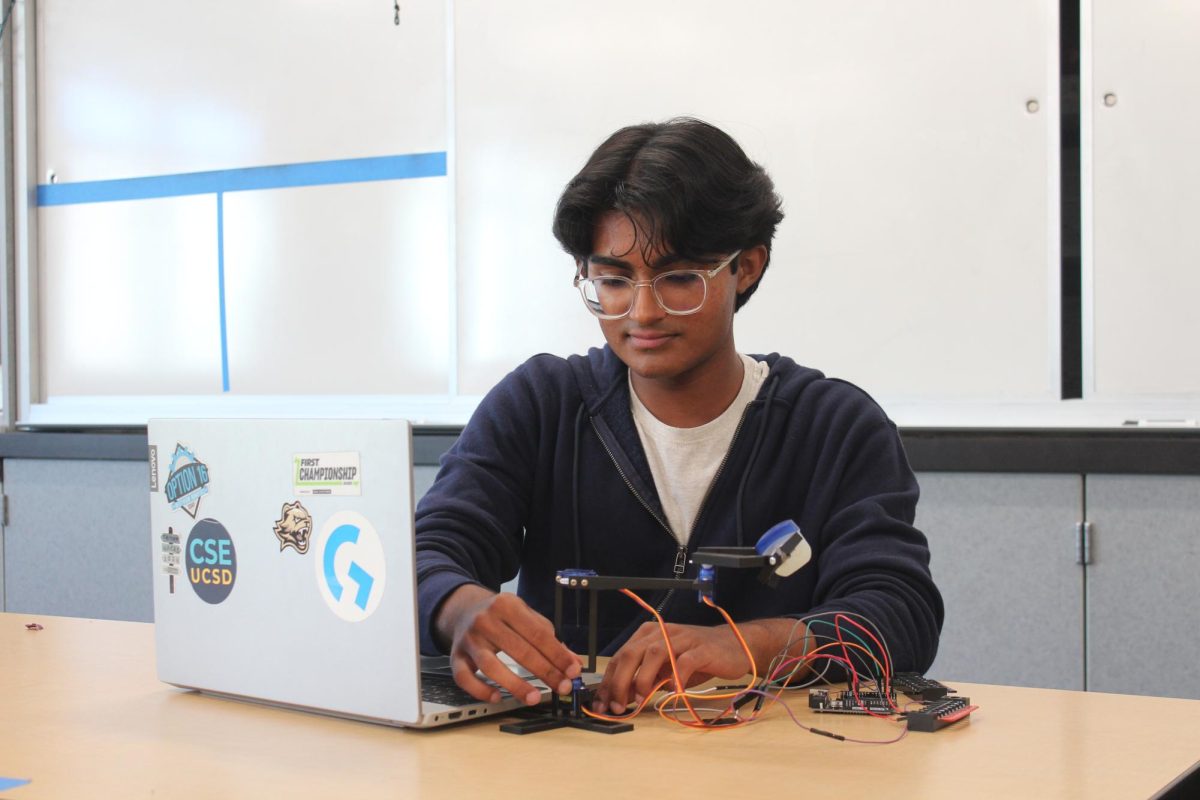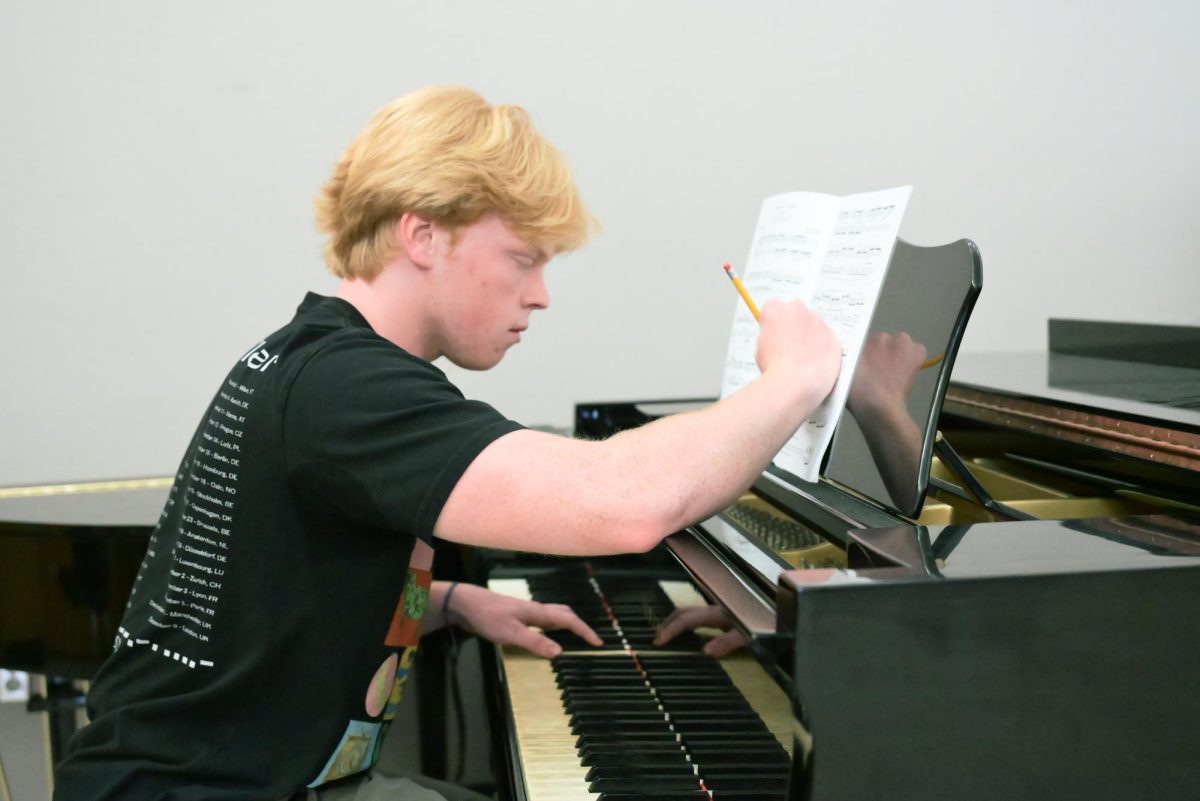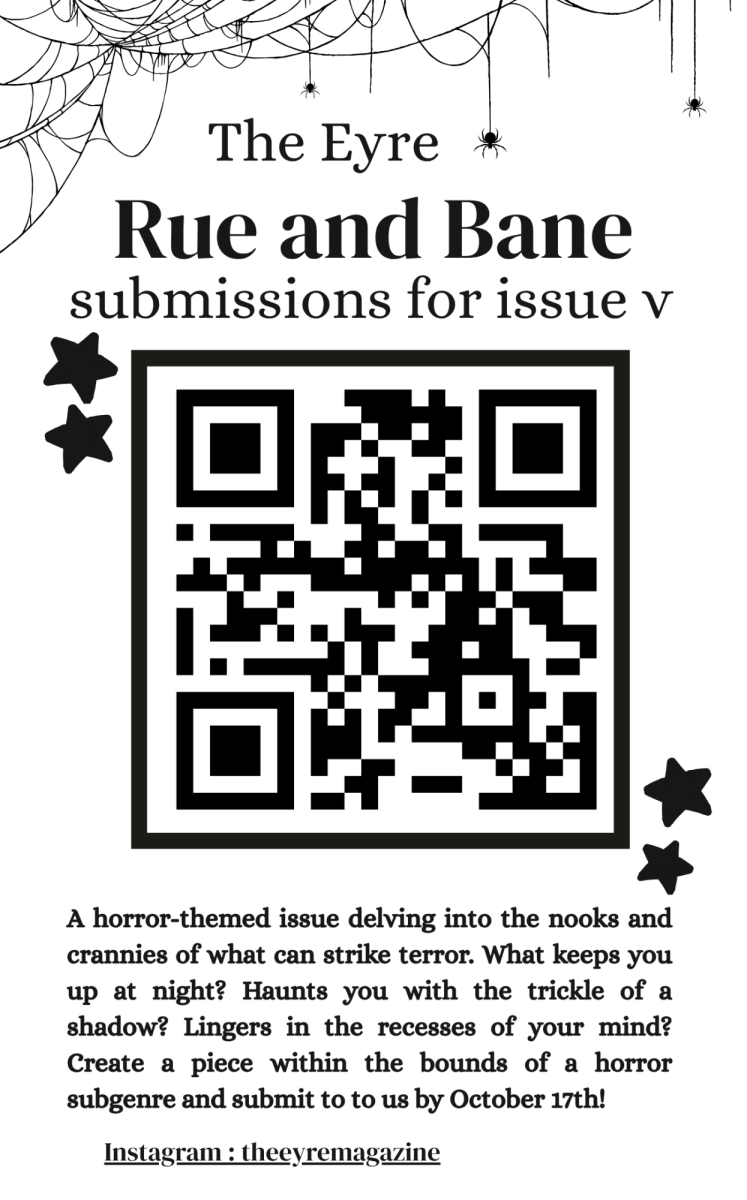Rylee Abiog (10), Alina Doble (10), and nine other girls elegantly strided onto the theater stage at Philippine Culture Night (PCN), May 16. A black bowl sat atop each of their heads, held steady by the ring-shaped red cushion below it. Delicate, measured movements followed gentle gonging and rhythmic drum beats, carrying them through the music as they swept forward in a line, their arms waving in harmony. The dance, known as the Banga dance, illustrates how women in the Kalinga region of the Philippines carry pots, called bangas, on their heads to fetch water from the mountains. The dancers meandered onwards, eventually spinning into a single-file line. With a final turn, the girls floated off-stage.
“[Women from the Kalinga region] would balance [the bangas] on their heads because the mountain [paths] were very narrow,” Abiog said. “That’s how they got the water, and the dance is to show that. It represents their strength and resilience. Only girls do the banga dance, because in Kalinga it was only the women who would fetch the water.”
PCN, organized by the Filipino classes and the Bayanihan club, was a night to celebrate and share Filipino culture while bringing Filipino people together. It showcased a myriad of performances, both modern and traditional.
“I hadn’t fully seen the other classes’ or clubs’ performances up until the PCN main performance,” Doble said. “I was pretty blown away when I did — the Tinikling’s energy was superb, the Hip Hop dances were fun to watch, and I couldn’t have felt any prouder of all the traditional dancers. Seeing other performances was really cool. I love seeing the other classes and [the Bayanihan] executive team on stage.”
Abiog and Doble, alongside all the girls in the Honors Filipino 7-8 class, participated in the Banga dance in this year’s PCN. According to Doble, the girls practiced once a week on Wednesdays for two months to learn the dance.
“We practiced the steps as a group, and then revised anything that looked wrong,” Doble said. “The whole dance is about being unified, so we had a group of 11 girls, including me, all in a line. We were all balancing bowls on our heads with a red cushion around our heads [to hold the bowl]. We were in an ‘S’ shape, swaying our hands, all trying to have unified movements and express how the traditional women would move their bowls and move around while climbing the mountain.”
Doble said the preparation was rewarding, with the dance being successfully performed in spite of her anxiety.
“Leading up to it, I was starting to get nervous,” she said. “[During the performance,] it was extremely nerve wracking at first, being up on stage, and the impact of the reality of the moment was just hitting in. It was both a terrifying and fun experience for me, but the dance went smoothly. It felt shorter compared to all the days we spent practicing, but those times perfecting each move came to be worth it. It was a really fun and exciting day.”
Abiog said the dance gave her an opportunity to bond with the girls in her class.
“It was very fun,” Abiog said. “It was like a line dance, almost, but it was very different from what I have done. I’ve done a dance called Itik-itik before, which is a dance that resembles the movements of a duck. That incorporated boys, so it was different [since] the Banga dance was all girls, and usually, you don’t have something balancing on your head. It was really a way to connect the girls in our class, and I gained friendship between all the girls in our class. Just learning all together was fun. I loved working with everyone.”
Doble said that PCN helped herself and others to be exposed to and better understand Filipino culture.
“I truly think PCN connected people by indulging them into the Filipino culture, for us performers and audience alike,” Doble said. “It gives people the chance to learn and show how proud we are of our heritage. As a Filipino-American who has yet to be in the Philippines, this event and class had bridged a gap in my own identity. I have a stronger grasp of my social and ethnic ties to my roots.”
Abiog, Doble dance at Philippine Culture Night
Reina Lee, Staff Writer
June 6, 2025
0
More to Discover
About the Contributor

Reina Lee, Staff Writer
Reina Lee (10) is in her second year in The Nexus. She loves drinking boba, taking naps, and reading on beanbags. In her free time, you can always find her listening to Gigi Perez.





